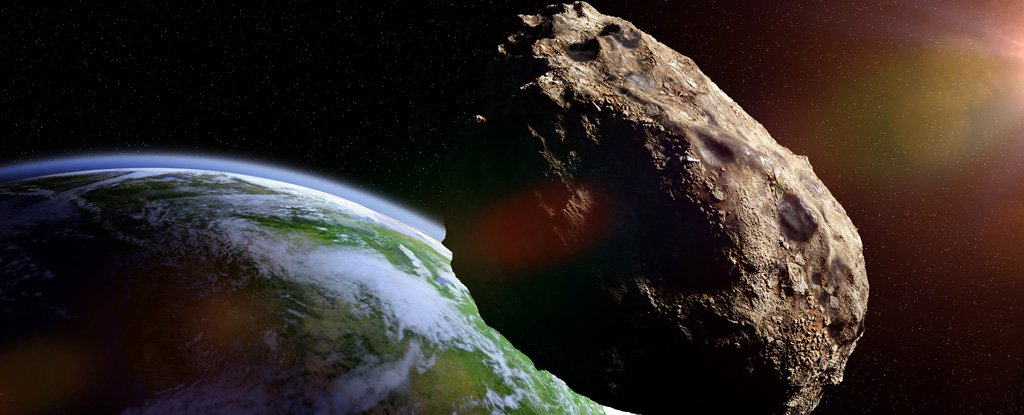World’s Space Agencies Warn of Asteroid Impact Risk in 2032
Science & Technology SciencePosted by NewAdmin on 2025-01-31 08:50:14 |
Share: Facebook | Twitter | Whatsapp | Linkedin Visits: 11

Astronomers and space agencies are closely monitoring asteroid 2024 YR4, which has been identified as a potential impact threat to Earth in 2032. Due to its recent discovery, its exact trajectory is not yet fully determined, but initial estimates suggest it is between 40 and 100 meters in diameter, with NASA’s approximation at 55 meters. If it were to collide with Earth, it could release energy equivalent to 8 megatons of TNT, similar to the Tunguska event of 1908, which flattened over 2,000 square kilometers of forest in Siberia. Such an impact would cause significant regional destruction, but not an extinction-level event.
While there is some concern over the asteroid’s path, experts emphasize that the probability of impact remains low and is likely to decrease as more observations refine its trajectory. Historically, other asteroids, such as Apophis, were initially classified as potential threats but later ruled out. Ongoing monitoring efforts by NASA, ESA, and other space agencies will provide a clearer picture in the coming months. More precise calculations are needed before determining whether any planetary defense action is necessary.
The asteroid, if confirmed as a risk, could be addressed using deflection strategies similar to NASA’s DART mission, which successfully altered an asteroid’s orbit in 2022. If impact avoidance measures prove unfeasible, regional authorities may need to implement evacuation and disaster preparedness plans. However, at this stage, scientists believe it is premature to sound any alarms, as further observations will likely rule out an Earth impact scenario. Continued monitoring will be essential to refine its orbit and determine whether any mitigation strategies are needed. Until more data is available, scientists urge the public to remain cautious but not alarmed.
Search
Categories
- Sports
- Business
- History
- Politics
- International
- Science & Technology
- Social Issues
- Disaster Management
- Current Affairs
- Education
- Startup Business
- Startup News
- Awards
- Community Services
- Fundraising Events
- Volunteer Services
- Health Initiatives
- Innovations and Initiatives
- In News
- dummybanners
- Awards
- Partners
- Products
- Press Releases
- News
- Fast Check
- South
- సినిమా
- Gallery
- Sunday Chronicle
- Hyderabad Chronicle
- లైఫ్ స్టైల్
- National
- క్రైం
- ట్రెండింగ్
- జాబ్స్
- అంతర్జాతీయo
- బిజినెస్
- రాజకీయం
- బిజినెస్
- సంపాదకీయం
- నవ్య
- చిత్ర జ్యోతి
- క్రీడలు
- జాతీయం
- తెలంగాణ
- తాజా వార్తలు
- మన పార్టీ
- మన నాయకత్వం
- మన విజయాలు
- డౌన్లోడ్స్
- మీడియా వనరులు
- కార్యకర్తలు
- North East Skill Center News
- Government Schemes
- Entrepreneurship Support
- Employment Opportunities
- Skill Training Programs
- Departments
- Investments
- Initiatives
- Resources
- Telangana IT Parks
- Events & Jobs
- Press Releases
- News
- Airport News
- Newtons Laws of Motion
- Karbonn in Business
- Investments in Karbonn
- Company quarterly sales
- Markets
- Auto News
- Industry
- Money
- Advertisements
- Stock target
- Company Updates
- Stock Market
- Company Sales
- Staffing and HR
- Constituency Assembly
- General News
- Srikalahasti Temple
- Bojjala Sudhir Reddy
- Technology & Innovation
- Sports
- Business
- Products
- Industries
- Services & Trainings
- Tools & Resources
- Technology Integration
- Drug Seizures & Arrests
- Telangana Narcotics
- Law & Enforcement
- Rehabilitation
- Nationwide Drug Policing
- Nigeria Seizures
- Global Operations
- Drug Awareness
- Drug Enforcement Tech
- NCB Drug Seizures
- Judicial Crackdown
- India's Surveillance Tools
- Cross-Border Links
- Women Safety
- Cyber Crimes
- Drug Abuse
- Traffic & Road Safety
- Community Connect
- Public Safety Alerts
- Citizen Assistance
- Nellore City News
- Politics & Administration
- Events & Festivals
- Agriculture & Rural
- Business & Economy
- Health & Wellness
Recent News
- Hyderabad Hit By Internet Outage As Electricity Department Removes Dangling Cables
- Mother's suicide attempt leaves two boys drowned and her fighting for her life
- Aviation Safety Concerns in India Highlighted by Parliamentary Panel
- Army Chief and Wife Pledge to Donate Organs, Lead by Example
- Indian Scientists Dive Deep into the Atlantic Ocean on NAUTILE Submersible
- CBI Corruption Allegation Leads to Defamation Suit by TMC Leader
- Immigrants face 'anti-Americanism' test for work, citizenship
- Solar Panels Aim To Power Indian Railways, Reduce Pollution